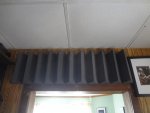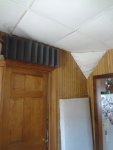pinkphiloyd
New member
Okay. I can't afford acoustic foam or bass traps at the moment. So I'm having to make do. At my disposal, I have a queen size mattress and box spring, as well as four 6'x7' moving pads. What's my best bet for utilizing this stuff to record some decent vocals? Moving pads in a corner, mic facing out, and mattress behind the mic, maybe?


